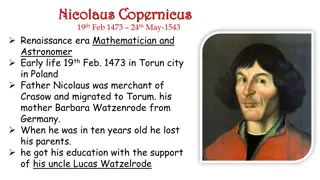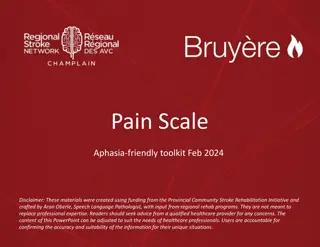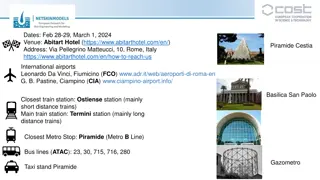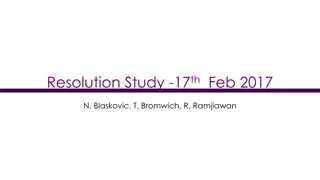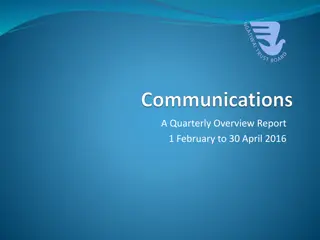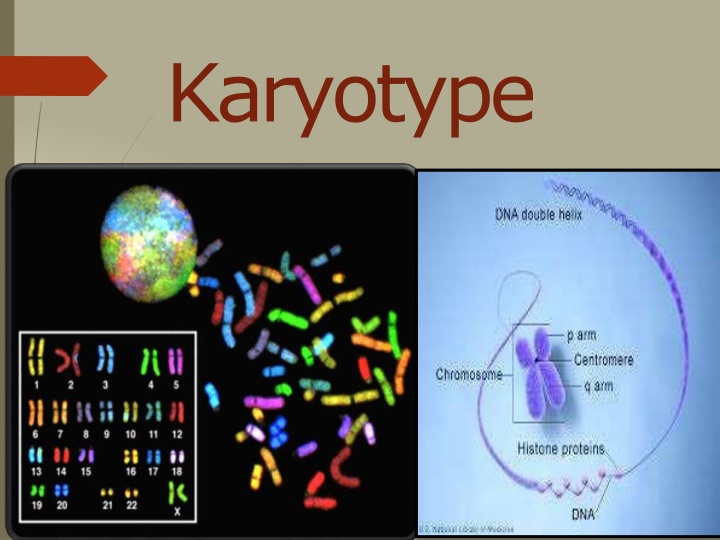
Understanding Karyotype and Chromosomes in Genetics
Explore the fascinating world of karyotype, chromosomes, and genetic disorders. Learn about the structure, types, and importance of karyotyping in identifying chromosomal abnormalities and genetic diseases in organisms.
Download Presentation

Please find below an Image/Link to download the presentation.
The content on the website is provided AS IS for your information and personal use only. It may not be sold, licensed, or shared on other websites without obtaining consent from the author. If you encounter any issues during the download, it is possible that the publisher has removed the file from their server.
You are allowed to download the files provided on this website for personal or commercial use, subject to the condition that they are used lawfully. All files are the property of their respective owners.
The content on the website is provided AS IS for your information and personal use only. It may not be sold, licensed, or shared on other websites without obtaining consent from the author.
E N D
Presentation Transcript
Karyotype Definition: A karyotype is the number and appearance of chromosome in the nucleus of a eukaryotic cell The term is also used for the complete set of chromosomes in a species or in an individual organism and for a test that detects this complement or measures the number
Karyology &Idiogram Definitions : The study of whole sets of chromosomes is sometimes known as karyology. The chromosomes are depicted in a standard format known as a karyogram or idiogram
Chromosome DNA packaging into thread-like structureI s called chromosomes . Each chromosome is made up of DNA tightly coiled many times around proteins that support its structure. Only visible during celldivision. It has specific number in each species e.g. Humans have 46 chromosomes while dog has 78 & fruit fly has 8 chromosomes.
Division of chromosomeaccording to centromerelocation Metacentric A chromosome that has a centrally placed centromere.. having centromere in the center such that both sections are of equal length. Sub metacentric A chromosome whose centromere is placed closer to one end than the other having centromere slightly offset from the center leading to asymmetry. Acrocentric A chromosome whose centromere is placed very close to, but not at, one end having centromere severely offset from center leading one very long and one very short section Telocentric :- having centromere at very end of chromosome. Humans don t have this type of chromosomes but found in other species like mice.
Group A (1-3) large metacentric chromosomes (but chr. 2 submetacentric) Group B (4-5) large submetacentric Group C (6-12, X) medium-sized submetacentric Group D (13-15) medium-sized acrocentric Group E (16-18) short submetacentric Group F (19-20) short metacentric Group G (21-22, Y) short acrocentric (but chr. Y submetacentric)
Advantages of karyotype Detection of chromosomal abnormalities Genetic disorders Gender identification Identify loss and addition of chromosome Pre-birth diagnosis of genetic diseases Identification of chromosomal numbers in different organism Identification of proper position of genes in chromosomes








